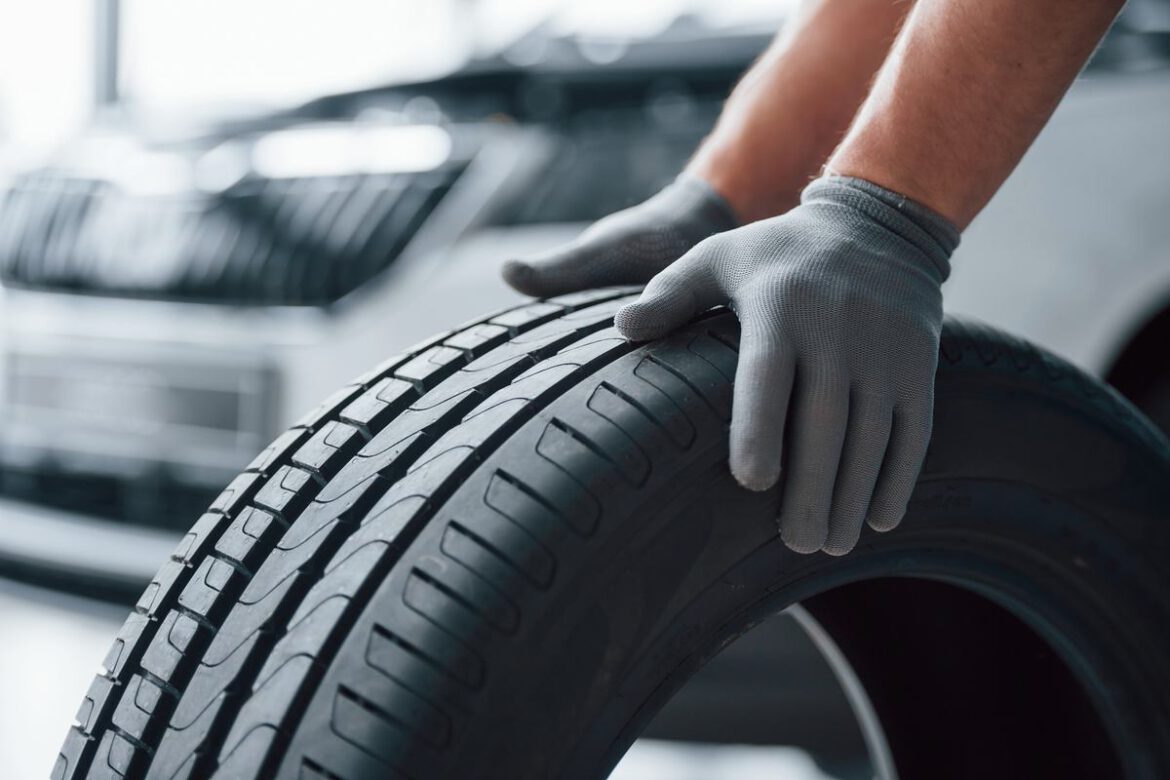
Tire disposal – what should a driver remember about when changing tires on their own?
Tire disposal is an important factor affecting the environment and our daily lives. It takes about 100 years for a tire to decompose naturally. At the same time, there is no alternative solution which could replace tires. We are developing electric drive units and creating modern systems for preventing road collisions, but the issue of car tires remains unchanged. What is tire disposal? Are there environmentally friendly ways to recycle rubber, soot and silica? What are the responsibilities of a driver who changes tires on their own? Read on to find out.
Table of contents
Tire disposal regulations
Polish law does not provide for the possibility to store tires or their parts. Even licensed vehicle disassembly stations are required to hand over some components to the applicable collection points. Batteries and windows go to the appropriate steel mills, while tires go to cement plants or plants specializing in material recycling.
One of the key regulations regarding the disposal of tires is Art. 122 of the Waste Act, according to which it is prohibited to store tires and their parts, with the exception of bicycle tires and tires with an outer diameter of more than 1400 mm. Since the storage of tires is not allowed, it is necessary to process them or completely dispose of them. It is also worth remembering that pursuant to Art. 55 sec. 1 of the Waste Act, throwing out tires in the trash is prohibited.
Mandatory tire recycling in Poland
Further legal restrictions have been imposed on producers, importers and distributors of tires through the Act on the Obligations of Entrepreneurs in the Management of Certain Wastes and on the Product Fee. They are required to recover a minimum of 75% of the tire tonnage, of which 15% must be recycled. In the vast majority, this is done in cooperation with external entities, such as the Tire Recycling Centre, which holds nearly 70% of the market. The recovery requirement applies to waste generated from:
- new pneumatic rubber tires used in passenger cars
- new pneumatic rubber tires used in motorcycles and bicycles
- new pneumatic rubber tires for buses, trucks and planes
- retreaded pneumatic tires made of rubber
- new pneumatic rubber tires used in agricultural equipment and machines
- used pneumatic tires made of rubber
Improper disposal of tires – fines
In accordance with Art. 162 of the Code of Petty Offences, a fine of PLN 20 to PLN 5,000 may be imposed for throwing out tires in places not intended for this purpose. In the most extreme cases, littering can be punished with imprisonment for a period of 3 months to 5 years. Severe penalties play a preventive role in this case, i.e. as a deterrent from breaking the law.
Tire recyclers may be fined if they:
- do not provide a document confirming recovery or recycling in a timely manner
- provide a document confirming recovery or recycling containing unreliable information
A fine may also be imposed on an entity transferring waste for recovery or recycling on behalf of an enterprise or a recovery organization if it does not submit an request for the issuance of a document confirming recycling or other recovery processes.
Penalties also apply to entities that illegally store tires on their property. This includes property leased for the purposes of conducting business activity. In such a case, Polish regulations provide for the possibility of imposing an administrative fine in the amount of PLN 1,000 to PLN 1,000,000 by the Voivodship Inspector of Environmental Protection. This applies mainly to entities that accept used tires at preferential rates without the intention to dispose of them. Farmers who utilize used tires to form heaps and feed silos without obtaining the appropriate permit are also subject to penalties.
Where can you legally dispose of tires?
- Tire shops – not legally required to accept old tires, but very often offer this service for a small fee when fitting new tires.
- Points of Selective Collection of Municipal Waste (PSZOK) – located in most communes; each calendar year we can give them up to 8 tires intended for passenger cars free of charge
- Tire recycling entities – companies specializing in the recovery and recycling of tire waste, such as the Tire Recycling Centre, have their own, individual rules for collecting tires from private individuals and entrepreneurs.
- Local waste collection campaigns – local governments often organize waste collections in order to prevent the creation of illegal landfills and dumps.
- Companies specializing in tire retreading – these companies focus on recovering used tires for reuse.
Changing tires on your own when driving – what is the driver required to do?
Changing summer tires to winter tires should take place when the average daily temperature is 7°C or lower. In terms of driving with winter tires, many people follow the “October to Easter” rule, but this is too much of a simplification. Tire replacement should be adapted to weather conditions. Winter tires start to lose their properties at an outside temperature of 8°C. When the average daily temperature reaches this level, it is a signal to the driver that it is time to change to summer tires.
The vast majority of drivers decide to change tires at tire centres, but you can also do it yourself. Some people have separate sets of rims with winter and summer tires, thanks to which the replacement of tires really comes down to replacing the wheels. However, if we have one set of wheels, then changing tires is more problematic since tires should be properly balanced.
Tire blowout while driving – what do you do?
A sudden tire burst is a very dangerous event to which truck drivers are most exposed. If a tire blows out, stay calm but take immediate action. We advise against pressing the brakes until the vehicle speed is reduced to 40-50 km/h. Only after decelerating should you proceed to gentle braking, stopping the vehicle on the roadside and turning on your hazard lights. Before changing a tire, we should also place a warning triangle behind the vehicle and make sure that we are not creating additional danger on the road. If we have the appropriate equipment, we can replace it ourselves. Otherwise, we should ask a tire service or roadside assistance for help.
Tire recycling – what does it look like?
Two concepts should be distinguished: energy recovery and material recycling. The first entails burning tires under controlled conditions. Usually, these are special furnaces in cement plants and other plants, which, thanks to the use of appropriate technology, emit less harmful substances into the atmosphere than traditional furnaces. However, this is not a perfect solution. On the one hand, the tires are completely burned, on the other hand, it contributes to CO2 emissions. Choosing the lesser evil is only a half-measure, so tire disposal should focus on material recovery. Material recycling is nothing more than obtaining raw materials from waste – in this case, tires.
A great example on a global scale is Denmark, which obtains raw materials from all tires that cease to be useful on the road. The recovered raw material can be used to produce a new tire or prove suitable for other applications in industry or even construction. The ideal goal that tire manufacturers should aim for is the maximum recovery of materials from used tires, and then use them in the production of completely new tires. At this stage of the development of our civilization, we are not yet able to do this. However, there are other eco-friendly ideas worth mentioning.
Eco-friendly solutions for tire disposal
Various countries are trying to outdo each other in finding practical and environmentally friendly methods to dispose of tires and reuse them. Particularly noteworthy is:
- the use of rubber granulate from tires for the construction of asphalt roads
- the use of recycled materials in the production of new tires
- the use of soot and silica recovered from tires for the production of printer ink and toners
- pyrolysis, i.e. the process of obtaining gases and oils from rubber
- the use of rubber from tires in the production of wiper blades, car mats, sports mats or even artificial turf for sports fields
- work on creating an alternative fuel from used tires
Proper disposal of tires and their recycling is an issue that cannot be neglected. The number of cars on the road is growing every year, which increases the production and sales of tires. Out of concern for the natural environment and the climate, we should strive to maximize the reuse of tires.



